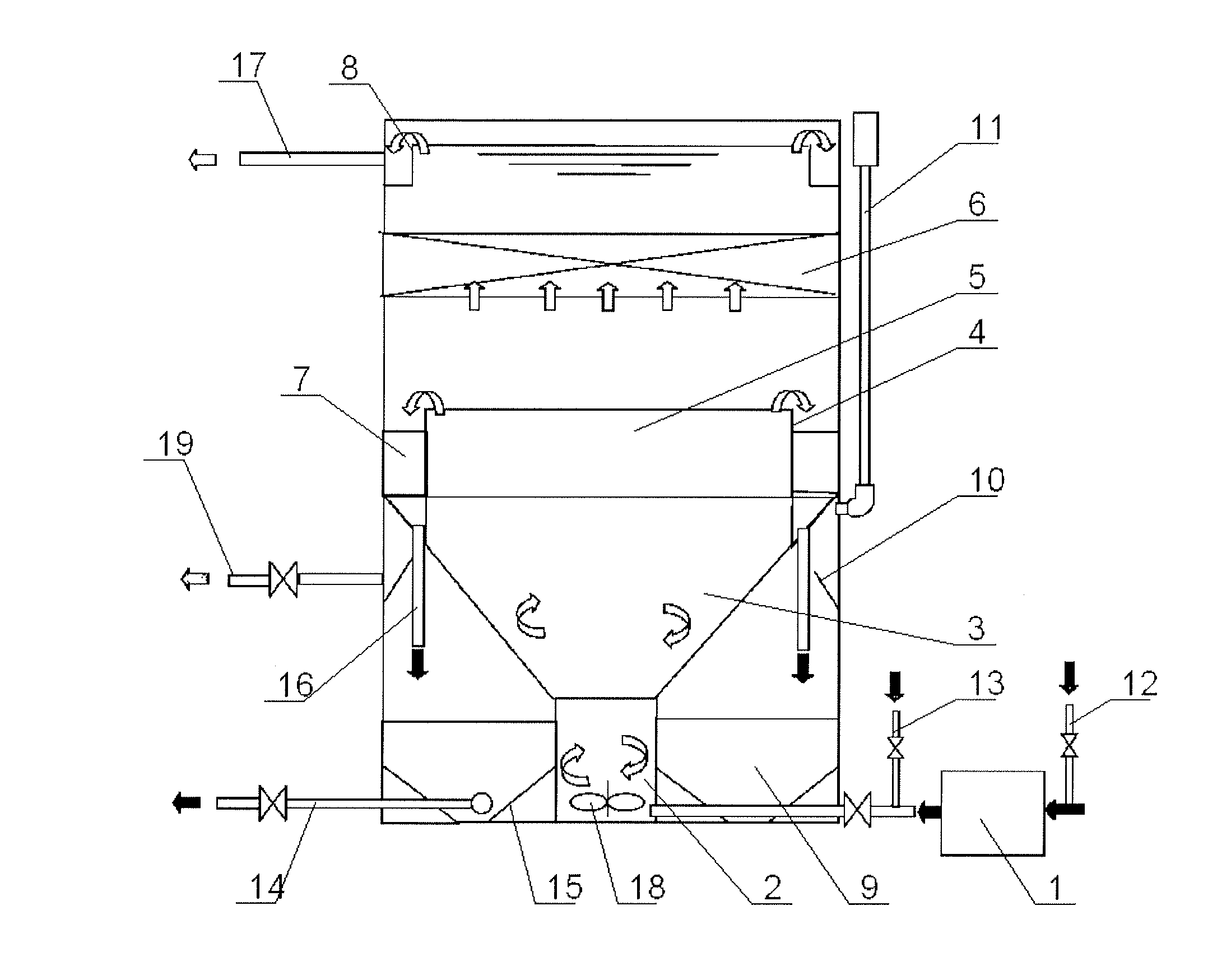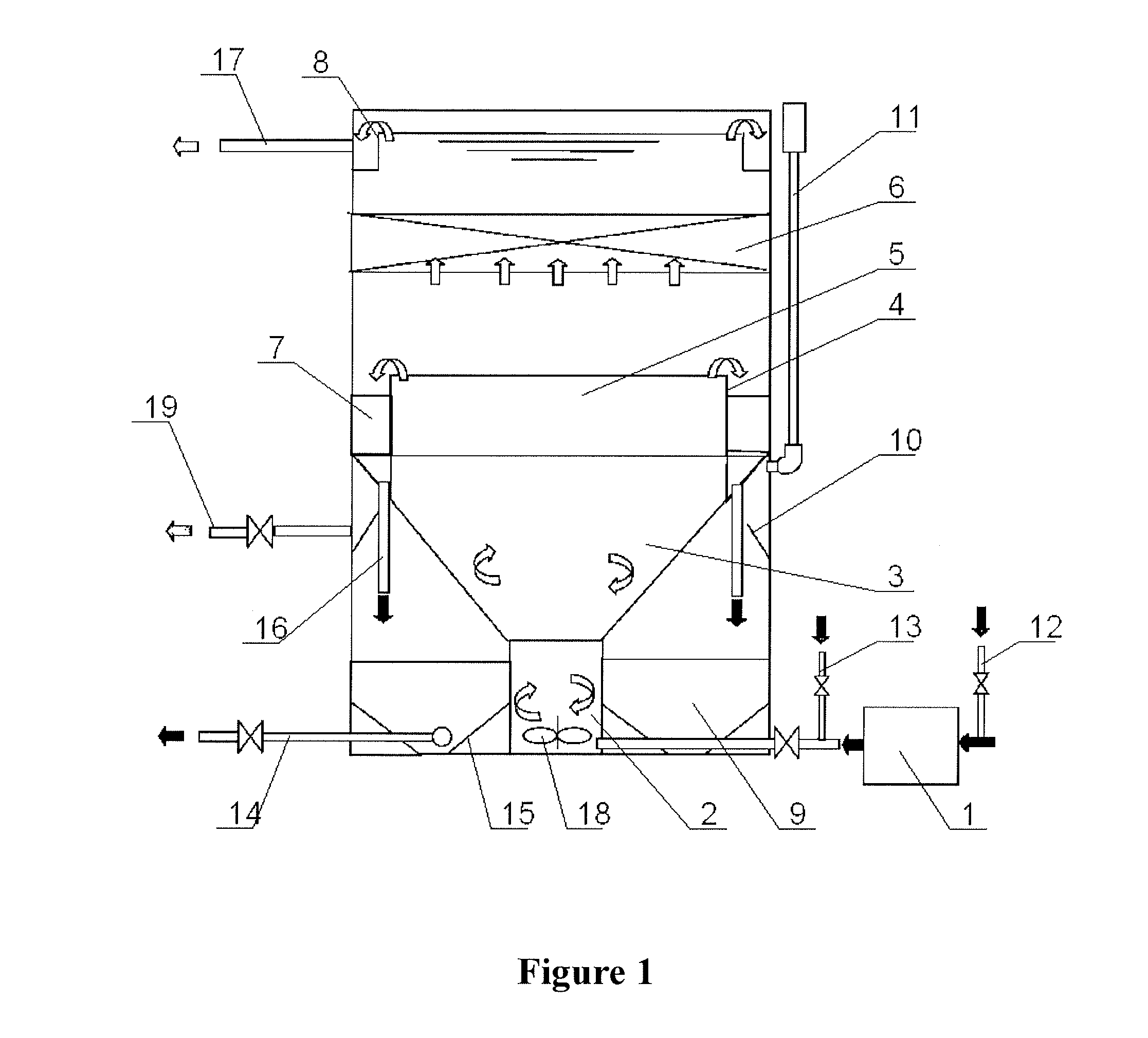Device for Purifying Oily Wastewater
a technology for purifying devices and wastewater, applied in the nature of treatment water, multi-stage water/sewage treatment, separation processes, etc., can solve the problems of difficult to meet the technology requirements for purifying produced water enriched with emulsified oil and suspended solids, affecting the oil yield of oilfields, and affecting the flow speed of produced water, etc., to achieve the effect of strong turbulence of wastewater, negative influence on flocculation, and gradual reduction of flow speed
- Summary
- Abstract
- Description
- Claims
- Application Information
AI Technical Summary
Benefits of technology
Problems solved by technology
Method used
Image
Examples
Embodiment Construction
[0035]As shown in FIG. 1, a device for purifying oily wastewater according to an embodiment of the invention includes a vertical tank of an atmospheric pressure, inside which a central coagulation reaction tube 2, a reverse cone-shaped cyclone flocculation stage 3, a suspended sludge filtering zone 5 and a purified water commutation stage of inclined plates 6 are included from bottom to top sequentially. The central coagulation reaction tube 2 is provided with a wastewater inlet at its bottom along a tangent direction. Also, at the bottom of the central coagulation reaction tube 2, an agitator having an adjustable rotation speed is provided, and the rotation speed may be set depending upon properties of the oily wastewater for achieving an optimal mixing effect.
[0036]A weir plate 4 is installed peripherally around the suspended sludge filtering zone 5, thereby forming sludge collecting groove(s) 7 which are in communication with a sludge concentrating zone 9 via sludge overflow pipe...
PUM
| Property | Measurement | Unit |
|---|---|---|
| atmospheric pressure | aaaaa | aaaaa |
| rotation speed | aaaaa | aaaaa |
| structure | aaaaa | aaaaa |
Abstract
Description
Claims
Application Information
 Login to View More
Login to View More - R&D
- Intellectual Property
- Life Sciences
- Materials
- Tech Scout
- Unparalleled Data Quality
- Higher Quality Content
- 60% Fewer Hallucinations
Browse by: Latest US Patents, China's latest patents, Technical Efficacy Thesaurus, Application Domain, Technology Topic, Popular Technical Reports.
© 2025 PatSnap. All rights reserved.Legal|Privacy policy|Modern Slavery Act Transparency Statement|Sitemap|About US| Contact US: help@patsnap.com


